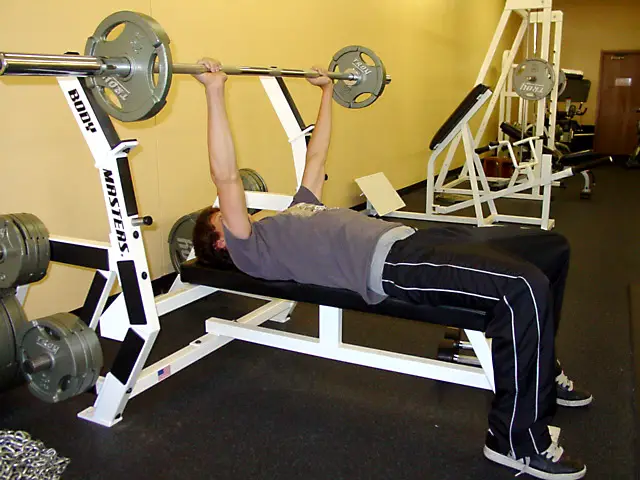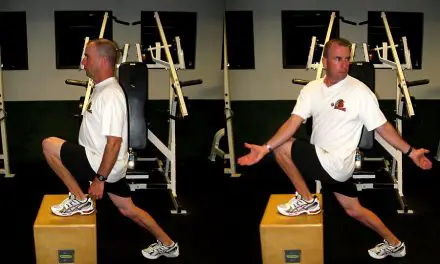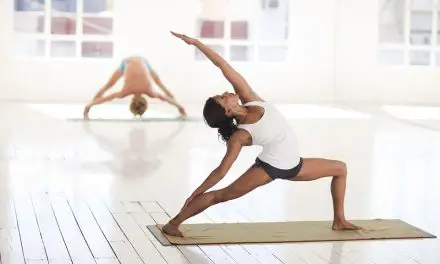While it seems obvious that lifting heavier loads will make your muscles bigger, research finds that lifting lighter loads can do the same job, but at a small cost.
The American College of Sports Medicine recommends that you should do two to three sets of eight to twelve reps for general strength conditioning, however, not everyone has the same goals, especially if you are looking to build muscles like Arnold Schwarzenegger in his prime or maximize strength and power gains.
Current research finds that lifting lighter loads can elicit similar degree of muscle growth as lifting heavier loads. A team of researchers, led by exercise physiologist Brad Schoenfeld of Lehman College in New York, examined 21 qualified studies and found that both heavy and light loads “showed large effect for 1RM increases” by about 35 and 28 percent, respectively. However, most of the subjects are mostly “untrained” and may not apply much to experienced weightlifters.
They did mention that experienced weightlifters can benefit from high-load training for maximum strength gains rather than doing lower loads, but there is limited data about this so this claim is still speculative.
The trials they examined fulfilled the following criteria:
- a trial that involved high-load training (greater than 60 percent of one-rep max (1RM)) and low-load training (less than or equal to 60 percent of 1RM)
- all exercises were performed to muscle failure
- at least one method was used to estimate the change of muscle mass
- the weight training lasted for at least six weeks
- the subjects had no known medical conditions or injuries that can impair performance
Different muscle fibers respond differently to heavy and light loads
Although the evidence shows that lifting lighter or heavier weights can get you bigger muscles, not all muscle fibers respond to the same to weight lifting loads. Several studies have shown that type II muscle fibers, or “fast-twitch muscle fibers,” show greater increase in the cross-sectional area and growth in response to heavy lifting than type I muscle fibers. Type I fibers, however, have higher growth than type II in lighter weight training sessions. (3, 4)
However, Schoenfeld at al. cautioned that “not all studies have found such an effect,” (5) and further replication are needed to confirm or disconfirm the findings.
Whether heavy or light, remember the SAID principle of weight lifting
For some people, this evidence means that you don’t need to lift heavy to get bigger muscles or stronger. If you are more concerned about your appearance and not much about function, than going lighter at about 50 to 60 percent of your 1RM at two to three sets of 12 to 15 reps per exercise is a good start.
But if you are participating in strength and power sports, or if you want to get stronger and don’t care much about how you look, then lifting heavy weights should be your workout. Lifting at between 60 to 80 percent of your 1RM at three to five sets of five to eight reps per exercise would be a start.
Plus, lifting heavier loads for strength and power athletes would help them carry over to the activities they do, based on the SAID principle (specific adaptation to imposed demands). The closer you train to the activity that you do, the better you get at what you do and the easier it will be. That is why triathletes need to train in running, swimming, and cycling, not just one of those activities.
Likewise, if you are an endurance athlete, weight lifting with lower loads can be beneficial, too.
If you are not sure about where to start, consult with a qualified personal trainer or strength coach.
(In light of the current COVID-19 pandemic, virtual training with a personal trainer or coach is possible.)
Read more:
How many set and reps do you really need to do?
How long do I need to rest between sets?
Top 10 exercise at home ideas during coronavirus quarantine
References
1. ACSM Guidelines for Strength Training. American College of Sports Medicine.
2. Schoenfeld BJ, Grgic J, Ogborn D, Krieger JW. Strength and Hypertrophy Adaptations Between Low- vs. High-Load Resistance Training: A Systematic Review and Meta-analysis. J Strength Cond Res. 2017 Dec;31(12):3508-3523. doi: 10.1519/JSC.0000000000002200.
3. Vinogradova, OL, Popov, DV, Netreba, AI, Tsvirkun, DV, Kurochkina, NS, Bachinin, AV, Bravyi, I, Liubaeva, EV, Lysenko, EA, Miller, TF, Borovik, AS, Tarasova, OS, and Orlov, OI. Optimization of training: Development of a new partial load mode of strength training. Fiziol Cheloveka 39: 71–85, 2013.
4. Netreba, AI, Popov, DV, Liubaeva, EV, Bravyi, I, Prostova, AB, Lemesheva, I, and Vinogradova, OL. Physiological effects of using the low intensity strength training without relaxation in single-joint and multi-joint movements. Ross Fiziol Zh Im I M Sechenova 93: 27– 38, 2007.
5. Morton, RW, Oikawa, SY, Wavell, CG, Mazara, N, McGlory, C, Quadrilatero, J, Baechler, BL, Baker, SK, and Phillips, SM. Neither load nor systemic hormones determine resistance training-mediated hypertrophy or strength gains in resistance-trained young men. J Appl Physiol (1985) 121: 129–138, 2016.
A native of San Diego for nearly 40 years, Nick Ng is an editor of Massage & Fitness Magazine, an online publication for manual therapists and the public who want to explore the science behind touch, pain, and exercise, and how to apply that in their hands-on practice or daily lives.
An alumni from San Diego State University with a B.A. in Graphic Communications, Nick also completed his massage therapy training at International Professional School of Bodywork in San Diego in 2014.
When he is not writing or reading, you would likely find him weightlifting at the gym, salsa dancing, or exploring new areas to walk and eat around Southern California.






